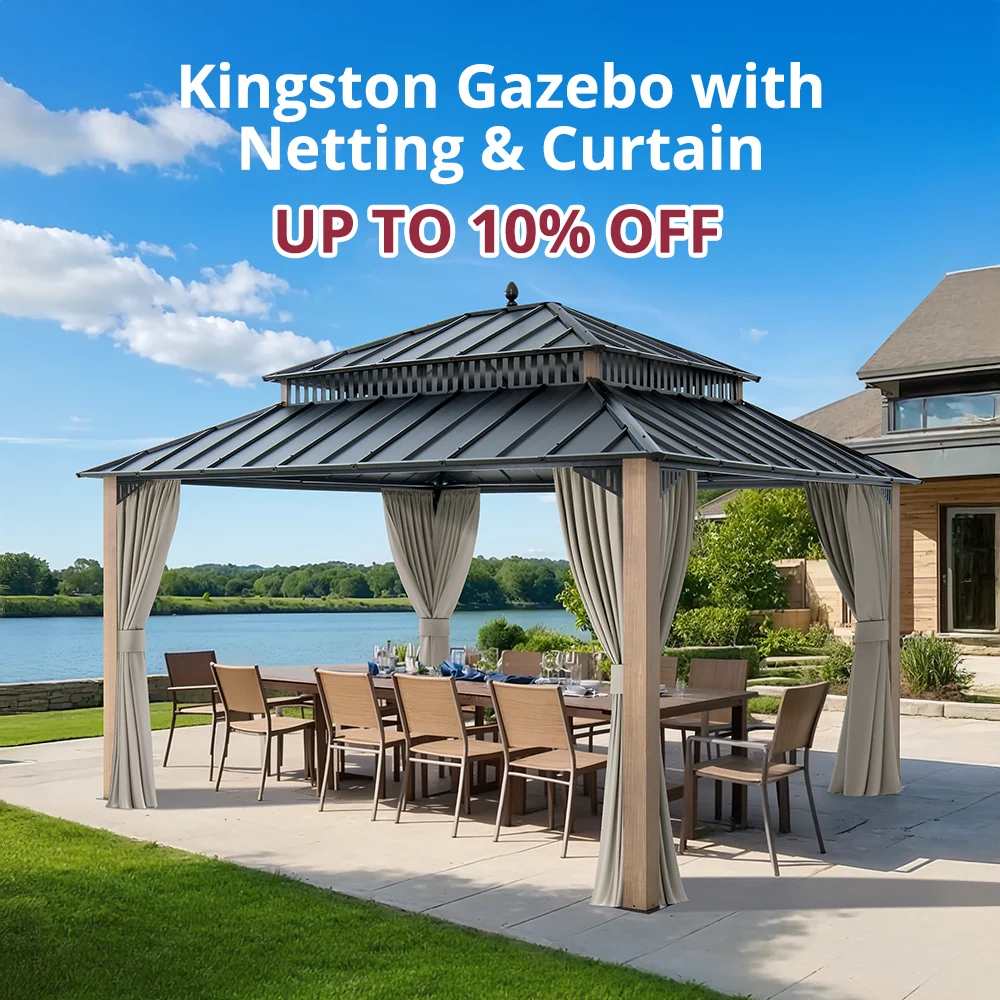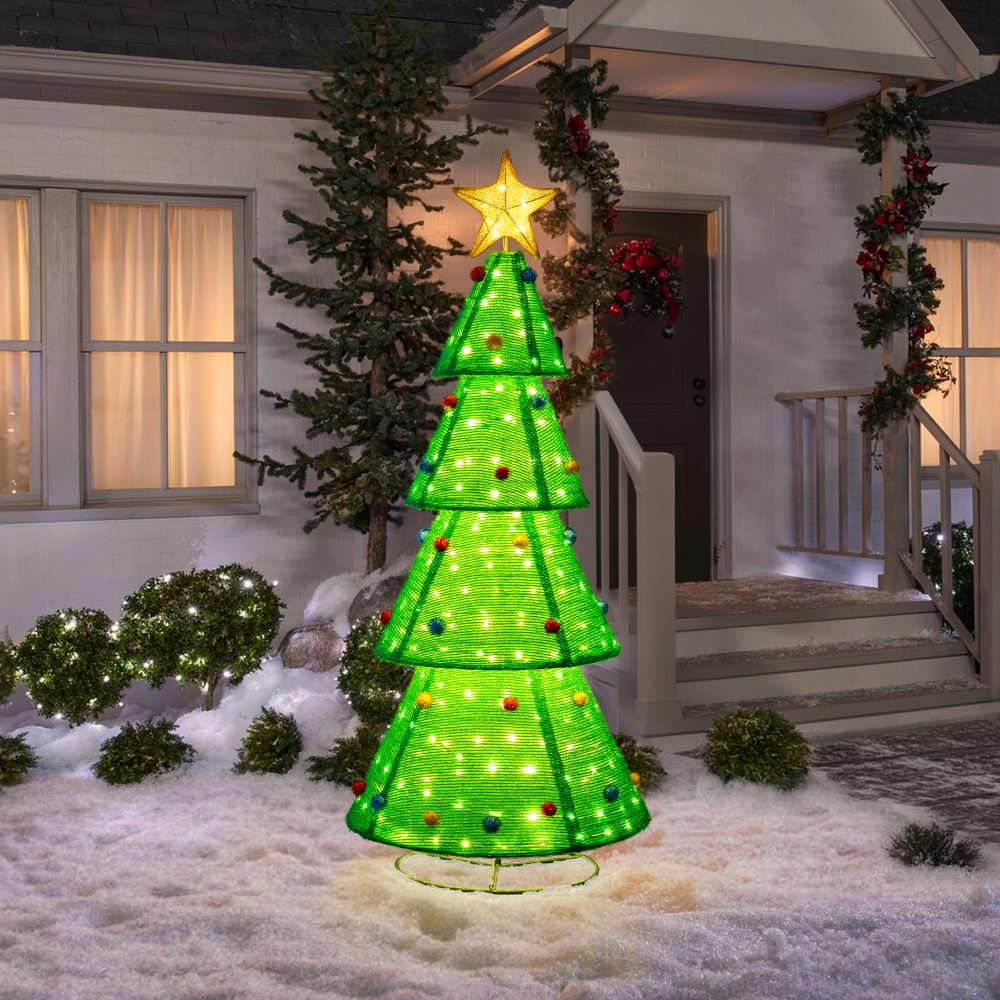When enjoying your garden gazebo, one common question arises: Should gazebo curtains be open or closed in windy conditions? The answer varies depending on factors like wind strength, privacy needs, and the durability of your outdoor gazebo curtains. In this guide, we’ll explore the best practices to protect your gazebo while maximizing comfort and style, so you can enjoy your outdoor retreat, rain or shine.
1. The Impact of Wind on Gazebo Curtains
Wind can significantly affect your gazebo privacy curtains. Strong gusts of wind can cause them to flap excessively, which not only disturbs the peaceful ambiance but can also result in wear and tear over time. Additionally, if your gazebo is not designed to withstand strong winds, leaving the curtains open could increase wind resistance, potentially leading to damage of the structure itself.
However, gazebo curtains made from reinforced, high-quality fabric and gazebos with sturdy frames are built to withstand wind. These models tend to be more resilient, offering a combination of stability, durability, and style, making them a great choice for those living in areas with variable weather.
When to Keep Curtains Open:
Light Breezes: Light winds are perfect for keeping your curtains open. The airflow will naturally flow through, preventing the space from feeling stuffy while allowing for proper ventilation. This is especially beneficial in warm weather.
Partial Coverage: If you prefer some protection from the wind but still want airflow, use gazebo curtain hooks to secure one side open. This reduces the wind resistance and maintains a comfortable environment without completely blocking the breeze.
Ventilation Needs: If the weather is warm or humid, keeping the curtains open can help prevent the space from feeling enclosed and stuffy, making it more comfortable to relax.
When to Keep Curtains Closed:
Strong Gusts: In gusty winds, closing your outdoor gazebo curtains completely will help reduce the “wind tunnel” effect. This prevents the gazebo from swaying and ensures that it remains stable.
Privacy & Shade: If privacy is essential or you’re seeking shade, closing your gazebo privacy curtains can help block the sun and create a more secluded, shaded space. This is also helpful when trying to prevent debris from blowing into the gazebo.
Rain Protection: Strong winds often come with rain, and closing the curtains will help shield your gazebo from wind-driven rain, keeping the interior dry and comfortable.
2. Choosing the Right Gazebo for Windy Conditions
Not all garden gazebos are equally equipped to withstand the challenges of windy weather. If you live in a particularly windy area, choosing the right gazebo is key to maximizing comfort and durability. Here’s what to look for:
Sturdy Frames:
Steel or heavy-duty aluminum frames are perfect for resisting bending and withstanding strong winds. These materials ensure that your structure remains intact even during adverse weather conditions.
Reinforced Curtains:
Outdoor gazebo curtains made from heavy-duty, tear-resistant fabrics are designed to hold up against wind. Consider curtains with weighted hems or tie-backs, which help keep the fabric from fluttering excessively and add an extra layer of stability.
Adjustable Hooks:
Gazebo curtain hooks provide an adjustable option, allowing you to fasten the curtains partially open, providing controlled airflow and reducing the potential for wind damage.
For the best outdoor gazebo for wind, look for models with:
Wind-resistant canopy designs that reduce wind drag.
Anchoring systems such as stakes, weight bags, or sandbags that secure the gazebo to the ground.
Tear-resistant fabric that can stand up to the rigors of outdoor conditions.
3. Tips for Securing Gazebo Curtains in Wind
To prevent damage to your gazebo and curtains while maintaining usability, here are some practical tips:
Use Tie-Backs or Hooks: Secure curtains with gazebo curtain hooks or tie-backs to limit movement during wind gusts. This helps reduce stress on the fabric while still allowing for some ventilation.
Weight the Hem: Some outdoor gazebo curtains come with weighted hems that help stabilize the fabric and prevent excessive flapping. If your curtains don’t include this feature, you can easily add small weights at the bottom for extra stability.
Roll-Up Options: Many outdoor gazebos come with retractable or roll-up curtain options. This allows you to reduce wind resistance when the weather is particularly gusty and roll them down when calm weather resumes.
Reinforce Weak Points: Always check the stitching, grommets, and hooks of your outdoor gazebo curtains regularly. Reinforcing weak points helps prevent tearing or damage during stronger winds.
4. Balancing Privacy and Wind Protection
Sometimes, your desire for privacy may conflict with the need to protect your gazebo from the wind. Here’s how to find a balance:
Mesh Panels: Use mesh panels that allow airflow while still blocking visibility. These are a great option if you want to keep the space feeling open without compromising on privacy.
Partial Closure: Keeping one side of the gazebo open can reduce the wind load while still providing a level of privacy and shade on the other sides.
Quick-Release Fasteners: If the weather changes quickly, quick-release fasteners make it easy to adjust your curtains on the fly, closing them during strong winds and opening them again once conditions improve.
Conclusion
Whether to keep your garden gazebo curtains open or closed in the wind largely depends on the strength of the breeze, your need for privacy, and the durability of your outdoor gazebo curtains. By following the tips provided, you can enjoy a stable, comfortable outdoor retreat no matter the weather conditions.
For the best outdoor gazebo for wind, invest in a gazebo with a sturdy frame, reinforced outdoor gazebo curtains, and anchoring systems. With adjustable features like gazebo curtain hooks, you can adapt your setup to changing weather conditions, ensuring both comfort and durability.






Leave a comment
All comments are moderated before being published.
This site is protected by hCaptcha and the hCaptcha Privacy Policy and Terms of Service apply.